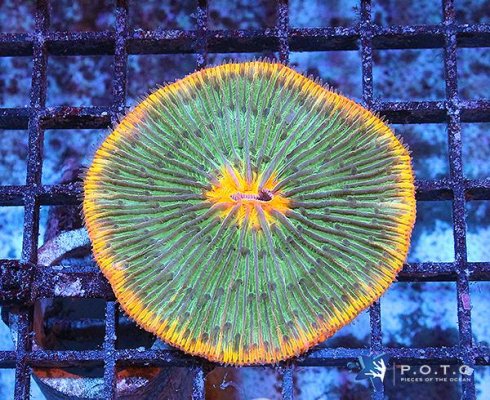I am starting this thread to correct some misidentified corals. Feel free to add in some misidentified corals that you know and the correct species/genus.
Acan Lords:

Acan lords are actually micromussas, not acans. They changed genera in 2016 I think (IDK, I wasn’t in the hobby in 2016).
Acanthastrea Echinata

‘Echinatas’ may not necessarily be of the species acanthastrea echinata. There is also acanthastrea subechinata, rotundoflora, and hemprichii. I don’t know how to identify acanthastrea subechinata and hemprichii, however, from what I’ve seen, acanthastrea rotundoflora seem to have smoother skin and look sort of like chalice corals.
Some Lobophyllias:

Some lobophyllias are actually acanthastrea pachysepta. These pachyseptas tend to be orange, however there are true lobophyllias that are orange and pachyseptas that are not orange. You can tell pachyseptas apart from lobophyllias by the texture of their flesh. A pachysepta’s flesh looks like other acan’s flesh.
Scolymia:



There are 3 species of ‘scolies‘ in the hobby, but none of them are actually in the genus scolymia. The most commonly imported is homophyllia australis, which looks like a big donut. Lobophyllia vitiensis is less frequently imported, and is more flat. Micromussa pacifica, the 3rd species, is typically smaller. Real scolymias are in the Caribbean.
Symphyllia:


Most symphyllias have been reclassified to lobophyllia, with the exception of ‘symphyllia’ wilsoni, which has been reclassified to australophyllia. ’Symphyllias’ look like lobophyllias, but have shared walls (I think that’s the correct term).
Acanthastrea Bowerbanki:

Bowerbankis were moved to the genus homophyllia, along with homophyllia australis.
Acan Lords:
Acan lords are actually micromussas, not acans. They changed genera in 2016 I think (IDK, I wasn’t in the hobby in 2016).
Acanthastrea Echinata
‘Echinatas’ may not necessarily be of the species acanthastrea echinata. There is also acanthastrea subechinata, rotundoflora, and hemprichii. I don’t know how to identify acanthastrea subechinata and hemprichii, however, from what I’ve seen, acanthastrea rotundoflora seem to have smoother skin and look sort of like chalice corals.
Some Lobophyllias:
Some lobophyllias are actually acanthastrea pachysepta. These pachyseptas tend to be orange, however there are true lobophyllias that are orange and pachyseptas that are not orange. You can tell pachyseptas apart from lobophyllias by the texture of their flesh. A pachysepta’s flesh looks like other acan’s flesh.
Scolymia:
There are 3 species of ‘scolies‘ in the hobby, but none of them are actually in the genus scolymia. The most commonly imported is homophyllia australis, which looks like a big donut. Lobophyllia vitiensis is less frequently imported, and is more flat. Micromussa pacifica, the 3rd species, is typically smaller. Real scolymias are in the Caribbean.
Symphyllia:
Most symphyllias have been reclassified to lobophyllia, with the exception of ‘symphyllia’ wilsoni, which has been reclassified to australophyllia. ’Symphyllias’ look like lobophyllias, but have shared walls (I think that’s the correct term).
Acanthastrea Bowerbanki:
Bowerbankis were moved to the genus homophyllia, along with homophyllia australis.















